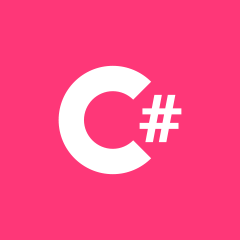如何将对象从 UDF 参数转换为 Excel-DNA 中的 Excel 范围?
我正在使用 Excel-DNA 开发一个简单的插件。我写了一个下面的函数,但我发现将它转换为 Range 对象时遇到了困难。尝试谷歌搜索,无法弄清楚。有人可以帮帮我吗
[ExcelFunction(Description = "Excel Range")]
public static string Concat2([ExcelArgument(AllowReference = true)] object rng)
{
try
{
// Assuming i am calling this from Excel cell A5 as =Concat2(A1:A2)
var app = (Excel.Application)ExcelDnaUtil.Application;
var r = app.Range[rng, Type.Missing];
return r.Cells[1,1] + r.Cells[2,2]
}
catch (Exception e)
{
return "Error";
}
}
 慕容森
慕容森浏览 448回答 3
3回答
-

一只甜甜圈
您应该直接从输入参数中获取值,而不是获取 Range COM 对象。这样做也更有效率。您的简单函数可能如下所示: public static object Concat2(object[,] values) { string result = ""; int rows = values.GetLength(0); int cols = values.GetLength(1); for (int i = 0; i < rows; i++) { for (int j = 0; j < cols; j++) { object value = values[i, j]; result += value.ToString(); } } return result; }通常,您希望检查value对象的类型,并基于此做一些不同的事情。object[,]从 Excel-DNA 传递的数组可以包含以下类型的项目:doublestringboolExcelDna.Integration.ExcelErrorExcelDna.Integration.ExcelEmptyExcelDna.Integration.ExcelMissing(如果不带参数调用该函数,则为=Concat2())。如果您将签名更改为具有单个类型的参数object(而不是object[,]),如下所示: public static object Concat2(object value)然后,根据函数的调用方式,您可能会获得上述类型之一作为 the ,value或者您可能获得一个object[,]数组作为 the value,因此在进行迭代之前,您的类型检查看起来会有所不同。 -

慕斯709654
在我的 F# 插件中,我有一个执行此操作的函数(我使用此函数主要是为了提取日期的显示值):[<ExcelFunction(Description="Returns what is currently displayed as text.", IsMacroType=true)>]let DISPLAYEDTEXT ([<ExcelArgument(Description="Cell", AllowReference=true)>] rng : obj) = app().get_Range(XlCall.Excel(XlCall.xlfReftext, rng, true)).Text应用程序在哪里:let app()= ExcelDnaUtil.Application :?> Excel.Application -

智慧大石
这个怎么样?[ExcelFunction(IsMacroType = true)]public static double GetBackColor([ExcelArgument(AllowReference=true)] object cell){ ExcelReference rng = (ExcelReference)cell; Excel.Range refrng = ReferenceToRange(rng); return refrng.Interior.Color;}这是辅助函数private static Excel.Range ReferenceToRange(ExcelReference xlRef){ Excel.Application app = (Excel.Application)ExcelDnaUtil.Application; string strAddress = XlCall.Excel(XlCall.xlfReftext, xlRef, true).ToString(); return app.Range[strAddress];}
 随时随地看视频慕课网APP
随时随地看视频慕课网APP
相关分类



 C#
C#